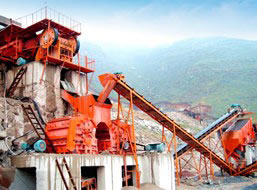Artificial sand, also known as manufactured sand (M-Sand), is produced by crushing rocks, stones, or larger aggregates into sand-sized particles. Unlike natural river sand, it is engineered for better consistency and performance in construction. Here’s how it’s made:
 Manufacturing Process of Artificial Sand
Manufacturing Process of Artificial Sand
1. Selection of Raw Material
– Hard rocks like granite, basalt, limestone, or quarry waste are used.
– The material should be strong, durable, and free from impurities.
2. Primary Crushing
– Large rocks are fed into a jaw crusher for initial size reduction (to ~100-150mm).
3. Secondary Crushing
– The crushed material is further processed in a cone crusher or impact crusher to reduce size to ~40-50mm.
4. Tertiary Crushing (Sand Making Stage)
– The key step involves a Vertical Shaft Impact (VSI) crusher or sand making machine, which crushes the material into fine, cubical-shaped sand particles (0-5mm).
– High-speed rotor impact ensures proper gradation and shape.
5. Screening & Grading
– The crushed sand is passed through vibrating screens to separate fine, medium, and coarse particles.
– Oversized material is sent back for re-crushing.
6. Washing (Optional)
– If excess dust or clay is present, the sand is washed in a sand washer to remove impurities and improve quality.
7. Drying & Storage
– The final product is dried (if needed) and stored in silos or stockpiles for distribution.
Advantages of Artificial Sand Over Natural Sand
✔ Controlled Gradation: Uniform particle size improves workability in concrete.
✔ Higher Strength: Angular particles enhance bonding in cement mixtures.
✔ Eco-Friendly: Reduces reliance on riverbed mining, preserving natural resources.
✔ Lower Moisture Content: Unlike river sand, M-Sand has minimal moisture absorption issues.
 Applications
Applications
– Concrete production (RCC, PCC)
– Plastering & masonry work
– Road construction (as fine aggregate)
Would you like details on specific machinery or quality standards?





Leave a Reply